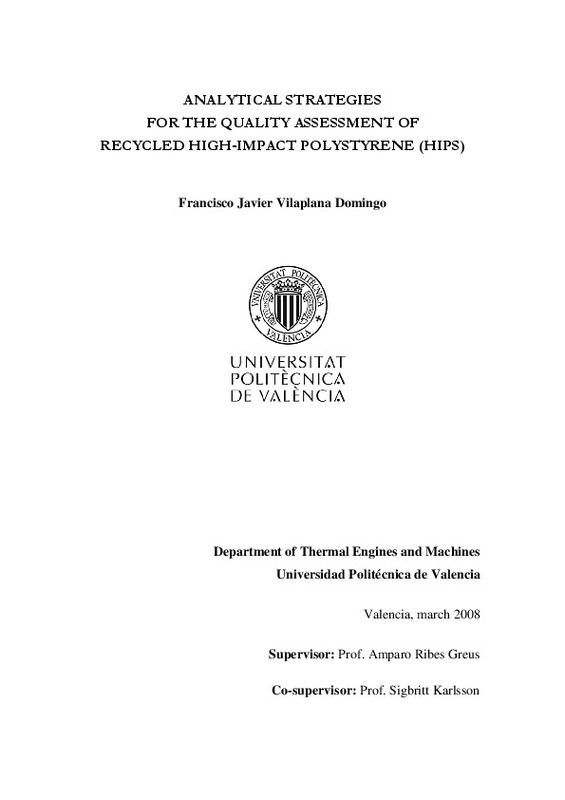- RiuNet repositorio UPV
- :
- Investigación
- :
- Tesis doctorales
- :
- Ver ítem
JavaScript is disabled for your browser. Some features of this site may not work without it.
Buscar en RiuNet
Listar
Mi cuenta
Estadísticas
Ayuda RiuNet
Admin. UPV
Analytical strategies for the quality assessment of recycled high-impact polystyrene (HIPS)
Mostrar el registro completo del ítem
Vilaplana Domingo, FJ. (2008). Analytical strategies for the quality assessment of recycled high-impact polystyrene (HIPS) [Tesis doctoral]. Universitat Politècnica de València. https://doi.org/10.4995/Thesis/10251/2186
Por favor, use este identificador para citar o enlazar este ítem: http://hdl.handle.net/10251/2186
Ficheros en el ítem
Metadatos del ítem
| Título: | Analytical strategies for the quality assessment of recycled high-impact polystyrene (HIPS) | |||
| Autor: | Vilaplana Domingo, Francisco Javier | |||
| Director(es): | Karlsson, Sigbritt | |||
| Entidad UPV: |
|
|||
| Fecha acto/lectura: |
|
|||
| Resumen: |
Polymers are subjected to physical and chemical changes during their processing, service life, and further recovery, and they may also interact with impurities that can alter their composition. These changes substantially ...[+]
|
|||
| Palabras clave: |
|
|||
| Código UNESCO: |
|
|||
| Derechos de uso: | Reserva de todos los derechos | |||
| DOI: |
|
|||
| Editorial: |
|
|||
| Tipo: |
|
recommendations
Este ítem aparece en la(s) siguiente(s) colección(ones)
-
Tesis doctorales [5403]







![Text file [Text]](/themes/UPV/images/text.png)



